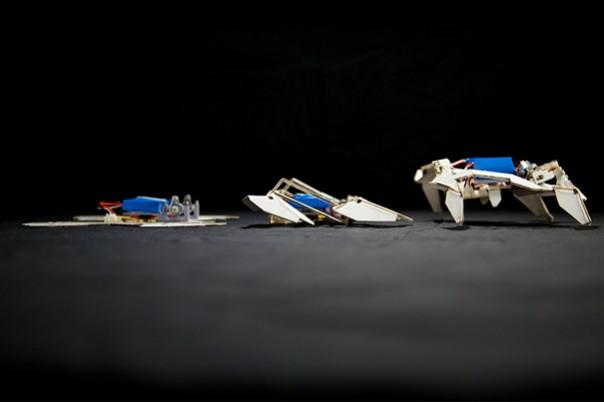
In a throwback to the robots from "Transformers", a team of scientists from the US have given shape to new robots which can build itself into any particular shape, and crawl away.
The team of researchers from Harvard University and Massachusetts Institute of Technology (MIT) say that they were inspired by different objects in nature, as well as the Japanese art of Origami, while designing these robots.
"Getting a robot to assemble itself autonomously and actually perform a function has been a milestone we've been chasing for many years," said Robert J Wood, in a press release by Harvard University.
The scientists say that their original inspiration came from amino acids - the chains of which tend to make complex shapes. They were also inspired by the way a flower tends to open up. But the inspiration for the implementation of this idea, they say, came from Origami.
The robots take four minutes flat, to assemble itself, from a completely flat sheet and then crawl away. This is mainly possible because the robots construct themselves from a two-dimensional surface that has many layers. These layers are comprised of different things like paper, stretched polystyrene and flexible circuits.
This two-dimensional surface has hinges at certain places, which allows the robot to fold it up into specific shapes. The surface is controlled by a microcontroller, which sends out heat waves to different parts of the surface, which hardens the polystyrene. When the polystyrene hardens, it stretches. This can help the robot to create the necessary shape at a necessary period of time.
After the folding is done, the robot needs a little time to cool down, after which it crawls away to perform whatever task it has built itself for. However, right now, the prototype built by the scientists can only fold itself and crawl. They are looking for different applications that the self-made robot can perform, and program it into the robot's system.
"Imagine a ream of dozens of robotic satellites sandwiched together so that they could be sent up to space and then assemble themselves remotely once they get there. They could take images, collect data, and more," said Sam Felton, lead author and a doctoral student at Harvard School of Engineering and Applied Sciences (SEAS).
"This achievement... changes the way we think about manufacturing, in that the machine fabricates itself. The days of big, rigid, robots that sit in place and carry out the same repetitive task day in and out are fading fast," said Don Ingber, Founding Director, Wyss Institute, Professor of Bioengineering at Harvard SEAS, and Judah Folkman Professor of Vascular Biology at Harvard Medical School.













